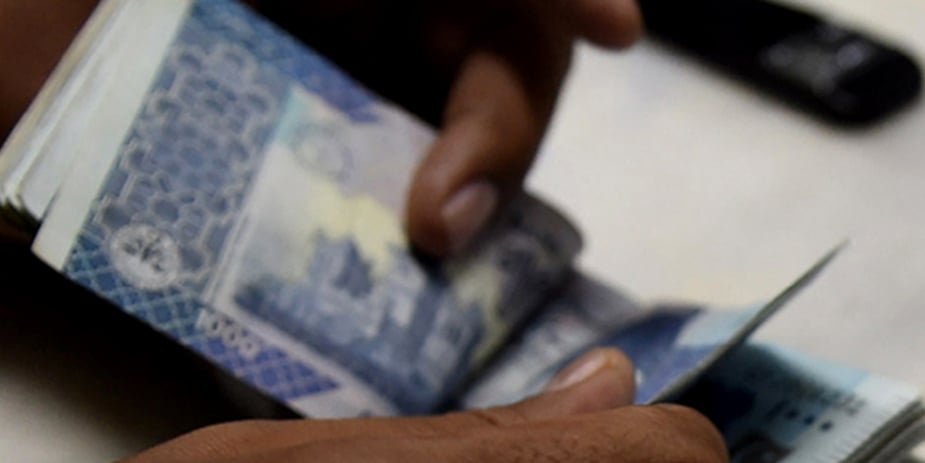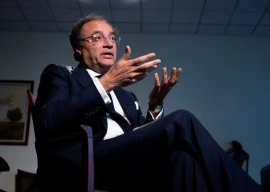
ISLAMABAD: Pakistan’s economic, particularly balance of payments-related, problems are being exacerbated by two recent international developments: the hike in interest rates in the United States and upward movement of international crude oil prices.
The US, world’s largest economy, experienced a protracted turbulence caused by the 2007-09 housing and financial crisis. To ward off the economy’s descent into depression, like the one that shook the country in 1929, interest rates were slashed.
However, as the economy is looking up, growing 4.5% in the second quarter of current year, and the unemployment rate has come down to 3.9%, the lowest in the last one decade, the US Federal Reserve (Fed) raised interest rates by 25 basis points in March from 1.50% to 1.75% and then from 1.75% to 2% in June 2018.
Two other interest rate hikes are likely at the end of September and later in December this year.
There is a direct relationship between interest rates and the value of domestic currency. All else being equal, hike in interest rates leads to currency appreciation as investors see higher returns on their investments in dollar-denominated assets.
Since the US is the lynchpin of global economic, financial and exchange rate systems, the changes in US interest rates affect other countries as well.
Since most of the international transactions of Pakistan are denominated in dollars, the economy is particularly vulnerable to the effects of movement in the American currency.
The US interest rate increase is driving up the value of Pakistan’s external debt as well as the cost of debt servicing. At the end of December 2017, Pakistan’s external public debt was $70.51 billion, which went up to $75.35 billion at the end of June 2018. In FY18, $5.62 billion was spent on foreign debt servicing.
Owing to dollar appreciation, Pakistan’s debt as well as debt servicing cost will go up in the current fiscal year even if no fresh loan is taken. The increase in debt may encourage capital flight as investors fear a backlash from the government.
Pakistan to pay $9.3b in external debt servicing
As a rule, capital seeks a higher yield and lower risk. Investors put their funds into developing countries’ markets, where risk is generally higher than in developed economies, if they offer a higher rate of return. Low interest rates in the US had made it easier for developing countries to attract foreign investment.
However, in the wake of interest rate surge in the US, developing countries like Pakistan will have to offer higher interest rates plus risk premium to attract foreign capital.
The new government is considering raising funds from the international bond market. The dollar appreciation will necessitate a higher rate of return on bonds.
In response to the upward movement of interest rates in the US as well as some other economies, the State Bank of Pakistan (SBP) increased the policy rate by 50 basis points to 6.50% in May 2018 and further to 7.50% in July 2018.
It is likely that the policy rate will be raised further in the upcoming monetary policy statement. The increase in interest rates is not without implications.
For one thing, it adds to the debt burden. For another, a contractionary monetary policy puts brakes on economic growth.
Commodity prices
Since most of the international trade transactions use the US dollar, the dollar appreciation will raise commodity prices. As Pakistan is essentially a commodity exporter, the unit value of exports will increase.
The downside, however, is that price increase will reduce the demand for non-oil commodities, such as cotton and rice, on which Pakistan’s export performance is so heavily dependent.
On the other hand, the increase in oil prices will inflate our import bill, since petroleum products are the major import goods. As a result, Pakistan, which ran a trade deficit of $37.67 billion in 2017-18, may see its trade imbalance worsen.
Pakistan’s debt, liabilities swell 83% to Rs30tr
The flip side of the dollar appreciation is depreciation of the rupee. Since December 2017, the rupee has depreciated more than 17 percentage points.
While the increasing trade and current account deficits and shrinking foreign exchange reserves have been the major cause of the depreciation, the dollar appreciation has also contributed to driving down the rupee.
The impact of depreciation on trade balance depends on various factors, such as price elasticity of demand for exports and imports, the supply side situation and the cost of doing business.
Depreciation drives up the general price level. FY18 closed with 3.9% average Consumer Price Index (CPI) and 3.5% Wholesale Price Index (WPI) inflation rates.
However, since May 2018, the CPI rate has been on the rise, registering 5.8% year-on-year growth for August 2018. Likewise, the WPI has been on the increase since April 2018, registering 11% year-on-year growth for August 2018.
The US monetary policy tightening is accompanied by, and has also contributed to, upward movement of international oil prices. Years 2015, 2016 and 2017 saw average per barrel crude oil prices of $49.50, $40.68, and $52.51, respectively. However, 2018 has seen a surge in prices.
At the end of June, July and August 2018, the average per barrel crude oil price was $71.98, $72.67 and $71.08 respectively.
The low oil prices enabled Pakistan to increase the purchase of capital equipment essential for development. They were also instrumental in keeping the general price level from rising head and shoulder.
The higher oil prices will stoke inflation, slow down growth and put pressure on balance of payments and foreign exchange reserves. The silver lining is that increased oil prices will push up economic growth in Gulf countries, which are a major source of remittances for Pakistan.
The writer is an Islamabad-based columnist
Published in The Express Tribune, September 17th, 2018.
Like Business on Facebook, follow @TribuneBiz on Twitter to stay informed and join in the conversation.




























































COMMENTS (1)
Comments are moderated and generally will be posted if they are on-topic and not abusive.
For more information, please see our Comments FAQ